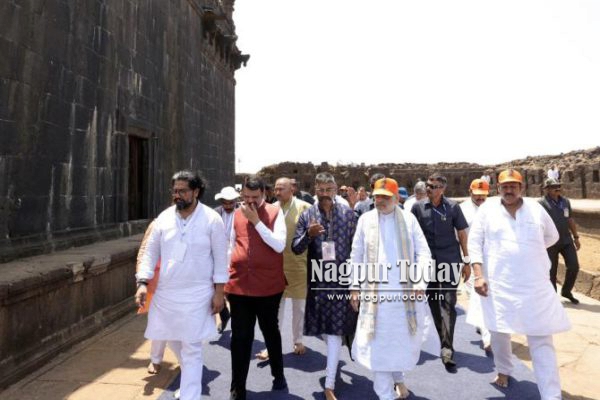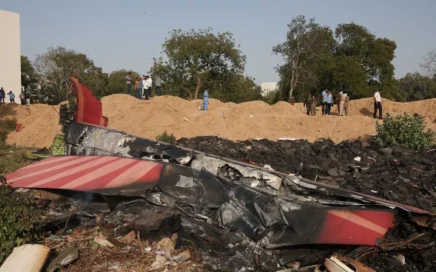 In a win for India, ‘Maratha Military Landscapes’, representing extraordinary fortification and military system envisioned by the Maratha rulers, was on Friday inscribed on the coveted UNESCO World Heritage List.
In a win for India, ‘Maratha Military Landscapes’, representing extraordinary fortification and military system envisioned by the Maratha rulers, was on Friday inscribed on the coveted UNESCO World Heritage List.
This is India’s 44th property to receive the recognition.
“This global accolade celebrates India’s enduring cultural legacy, showcasing its diverse traditions of architectural brilliance, regional identity and historical continuity,” the culture ministry said.
Prime Minister Narendra Modi, Union Culture Minister Gajendra Singh Shekhawat along with Maharashtra Chief Minister Devendra Fadnavis “lauded the historic milestone and congratulated the people of India for this achievement”, it said in a statement.
The decision was taken during the ongoing 47th session of the World Heritage Committee being held in Paris.
“New inscription on the @UNESCO #WorldHeritage List: Maratha Military Landscapes of India, #India,” UNESCO said in a post on X.
The nomination for UNESCO tag was for the 2024-25 cycle.
Its 12 components are — Salher Fort, Shivneri Fort, Lohgad, Khanderi Fort, Raigad, Rajgad, Pratapgad, Suvarnadurg, Panhala Fort, Vijay Durg, Sindhudurg in Maharashtra and Gingee Fort in Tamil Nadu.
These components, distributed across diverse geographical and physiographic regions, showcase the strategic military powers of the Maratha rule, the Indian officials had earlier said.
The ‘Maratha Military Landscapes’ was developed between the 17th and 19th centuries.
There are more than 390 forts in Maharashtra out of which only 12 forts were selected under the Maratha Military Landscapes of India, of these eight forts are protected by the Archaeological Survey of India, the ministry earlier said.
The inception of the Maratha military ideology dates back to the 17th century during the reign of Maratha King Chhatrapati Shivaji Maharaj by 1670 and continued through subsequent rules until Peshwa rule till 1818, it said.
Shekhawat in post on X said, “Truly proud day for Bharat’s cultural heritage.”
“My heartfelt gratitude to Hon’ble PM Shri @narendramodi ji for his visionary leadership in preserving and celebrating India’s glorious past. This is India’s 44th UNESCO World Heritage Site – a testament to our rich civilizational legacy, indigenous military engineering, and architectural brilliance,” he added.
These magnificent 17th-19th century forts, spread across 12 iconic sites — 11 in Maharashtra and one in Tamil Nadu — stand as “timeless symbols of strategic mastery, ecological harmony, and the Maratha spirit of resilience. This historic inscription was granted at the 47th Session of the World Heritage Committee in Paris.#MarathaForts #WorldHeritage #UNESCO #CulturalPride #ViksitBharat”, the Union minister wrote.
Ambassador and Permanent Representative of India to the UNESCO, Vishal V Sharma, delivered the statement on New Delhi’s behalf after the inscription was announced.
“This is a historic day, not only for India, but especially for Marathi people all over the world. The rich cultural heritage of the Marathas has been honoured by the recognition of its Outstanding Universal Value by the international community,” he said.
A few other members of the delegation stood behind him holding the tricolour.
“The Maratha Military Landscapes represent a unique fusion of military innovation, ecological adaptation and architectural excellence shaped by rugged landscapes of the Sahyadris and the indomitable spirt of the Maratha polity,” he said.
“We dedicate this inscription to the wisdom of Chhatrapati Shivaji Maharaj, whose legacy lives on though these ml and the works of Marathas for the well being of the people,” said Sharma, who shared the statement delivered by him with PTI.
Later in a telephonic interaction with PTI from Paris, he described this victory a result of “team work” and dubbed the nomination as a “massive” one from India.
The proposal was sent to the World Heritage Committee in January 2024 and the inscription comes after a rigorous eighteen-month long process involving several technical meetings with the advisory bodies and visit of the ICOMOS’ mission to review the sites, the ministry said.
Last year, the mound-burial system of the Ahom dynasty in Assam — ‘Moidams’ — were inscribed in the UNESCO World Heritage List at the 46th Session of the World Heritage Committee held in New Delhi.
India had hosted the key meeting for the first time and Ambassador Sharma was the chairperson of the 46th session of the WHC.
India ranks sixth globally and second in the Asia Pacific Region for the most number of World Heritage Sites, the ministry said.
There are 62 sites from India which are on the UNESCO’s Tentative List of World Heritage, which is a mandatory threshold for any site to be considered as a World Heritage property in future.
Every year, each State Party may propose just one site for consideration of the World Heritage Committee for inscription to the coveted list.
Eight other sites — Murujuga Cultural Landscape (Australia), Xixia Imperial Tombs (China), Cambodian Memorial Sites: From centres of repression to places of peace and reflection (Cambodia), Prehistoric Sites of the Khorramabad Valley (Iran), Forest Research Institute Malaysia Forest Park Selangor (Malaysia), Diy-Gid-Biy Cultural Landscape of the Mandara Mountains (Cameroon), Mount Mulanje Cultural Landscape, )(Malawi) and Faya Palaeolandscape (the UAE) were also inscribed on the list by the WHC on Friday.
















